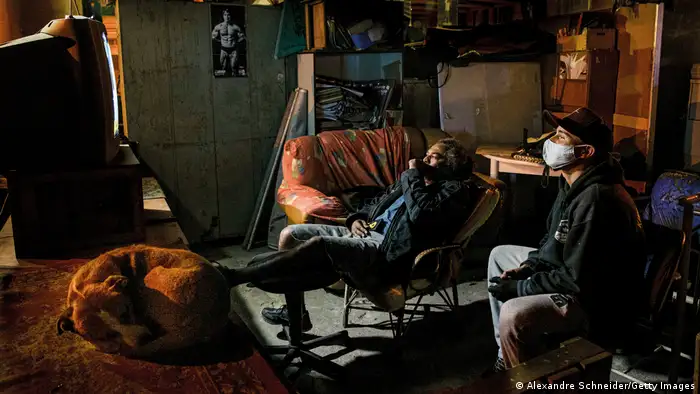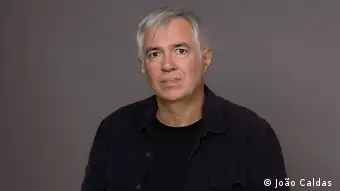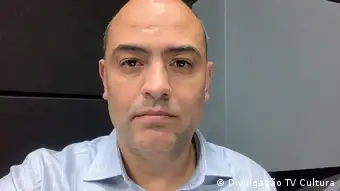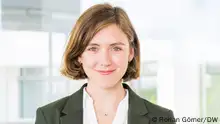WELTZEIT
Breaking barriers in Brazil
Free media in Brazil is under threat. But one TV station—the largest in the country—is fighting back, covering arts, culture and education in a free and independent manner.
Based in São Paulo, TV Cultura had its first broadcast in 1969. It is part of Fundação Padre Anchieta—a non-profit foundation which aims to offer programming in the public interest, without influence from commercial or governmental entities.
TV Cultura's audience is as diverse as its programming. "It reflects the diversity of the Brazilian people," says Programming Director Eneas Carlos Pereira about the TV station which can be watched throughout Brazil via more than 150 partner stations. "TV Cultura's audience and broadcast performance are built through dialogue with Brazil's populations outside the urban axis, which means riverside and rural populations as well as communities in the periphery. They are our major target," he shares.
The television's programming focuses predominantly on educational and cultural topics but also offers sports as entertainment. Its priorities include educating children and young people, and shaping opinions. During the pandemic, TV Cultura created a channel dedicated to broadcasting classes by the public-school network to children and young people. With people spending more time at home, the TV station registered an increase not only within its children and teen audience, but also within its nighttime audience of 50+ year-olds.
Social media has changed consumer habits too. "On TV we talk mainly to children and young people from classes C and D (those without access to gadgets) and to the 50+ audience. On social networks we have established dialogue with the young audience, between 18 and 35 years old. Nevertheless, many of our traditional programs are also being watched both online and on TV by different audiences," says Pereira.
But how do they ensure that the relevant content addresses the needs of all user groups; from young to old, those living in cities and those in rural areas? Pereira says that the audience recognizes "TV Cultura as a reliable source of news and information about the pandemic in the world and in Brazil."
The biggest challenge, he says, is the struggle for audience and the search for funds. Unlike in European countries, public broadcasters in Brazil are still perceived as political, which is not the case. "We are a public broadcaster, managed by civil society and committed to providing access to quality content to this society."
Regarding TV Cultura’s long-term cooperation with DW, Digital Media Manager Rocha Cavalcanti says that DW is "a partner with great credibility, that produces respectable and high-quality journalistic content, so that the public has more relevant content to be informed."
Pereira sees similar objectives and goals between DW and TV Cultura: "Especially in moments such as what we are currently experiencing in Brazil, where besides the pandemic, we experience daily threats to democracy, to the fight for the rights of minorities, and mainly, threats against those who produce art, culture, information, and education—we have experienced difficult days here, and so the partnership of broadcasters like DW is fundamental for the future." +
TV Cultura
Widely acknowledged as a successful example of public television, TV Cultura is the most important media channel from the Fundação Padre Anchieta (FPA). It is recognized as a modern broadcaster committed to providing critical, innovative and high-quality programming for all audiences and age groups. FPA broadcasters have education, journalism, citizenship, dramaturgy, culture, art, music, childhood, youth, and the environment as priorities, enabling them to create quality programs for their diverse audience.
TV Cultura and DW have a long-standing and successful partnership. The Brazilian partner regularly broadcasts DW magazines like Camarote.21 and Futurando during prime time and also documentaries from the DW Transtel catalogue. Every week, DW joins the "Jornal da Cultura" news program with a live cross. On its web page TV Cultura publishes DW articles and enriches its social media offer with DW Videos. During its 51 years of history, TV Cultura has won more than 400 national and international awards, including more than 40 Brazilian cultural awards APCAs, four International Emmy Awards and 12 Prix Jeunesse Awards.
Brazil is ranked 111th out of 180 countries in the 2021 World Press Freedom Index. Since Jair Bolsonaro's election as president in 2018, the situation for journalists has worsened. With a wide and diverse range of collaborations, TV Cultura and DW share the same commitment to freedom of information and to making relevant information accessible to all.
Eneas Carlos Pereira (left) is the Programming Director of TV Cultura. He is an author and screenwriter for cinema and television. He studied Dramaturgy and Criminal Sciences at the University of São Paulo.
Danilo Rocha Cavalcanti (right) is responsible for Digital Media at TV Cultura. He studied data processing and computer science. He previously worked at Latin America’s largest internet portal UOL for 20 years. Cavalcanti is currently responsible for producing content for TV Cultura’s website, social networks, and live broadcasts on digital channels.
This article is based on an interview with Eneas Carlos Pereira and Danilo Rocha Cavalcanti. It is part of the 2021 English issue of the DW corporate magazine Weltzeit. Read the full magazine here: Weltzeit: Local insight, global reach. Working in a strong network with partners.
- Date 11.06.2021
- Author Anne Samba
- Feedback: Send us your feedback.
- Print Print this page
- Permalink https://p.dw.com/p/3ukcm
- Date 11.06.2021
- Author Anne Samba
- Send us your feedback.
- Print Print this page
- Permalink https://p.dw.com/p/3ukcm




